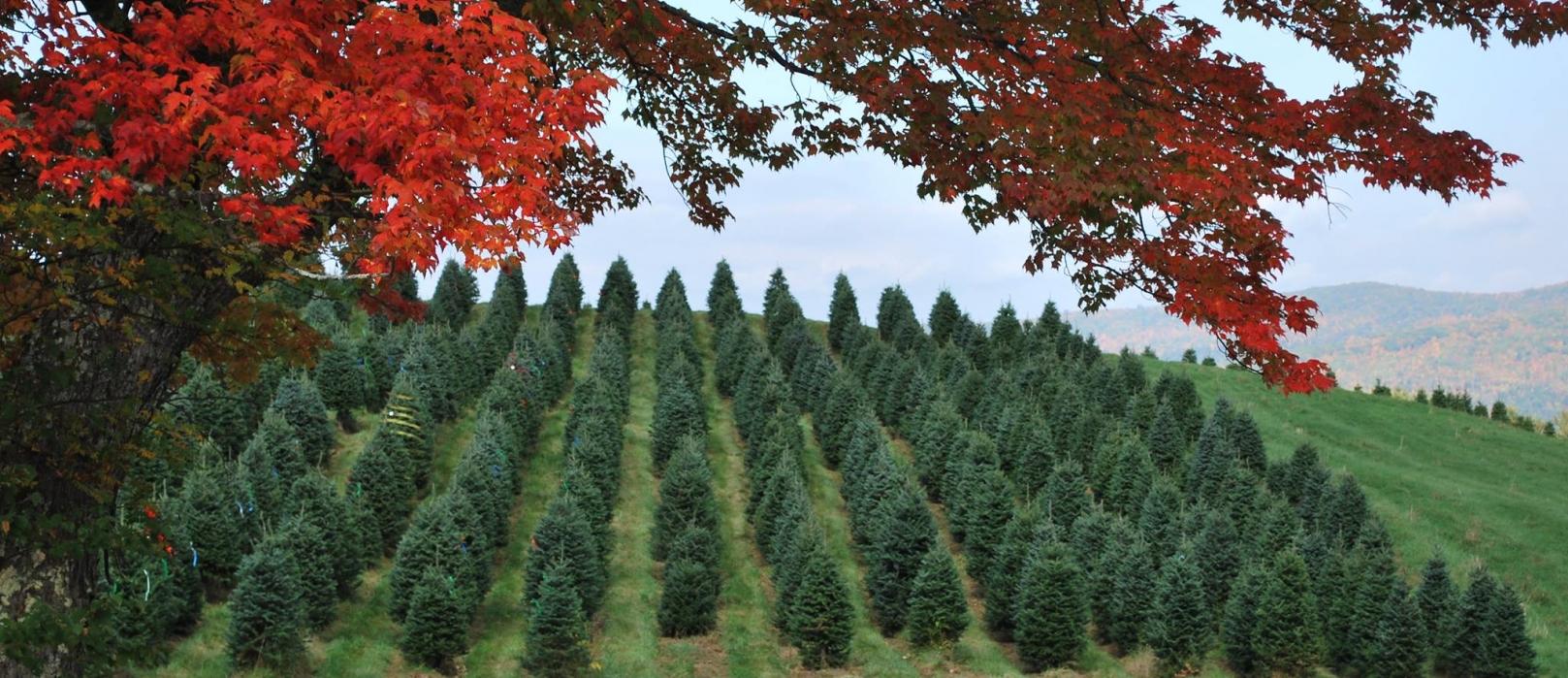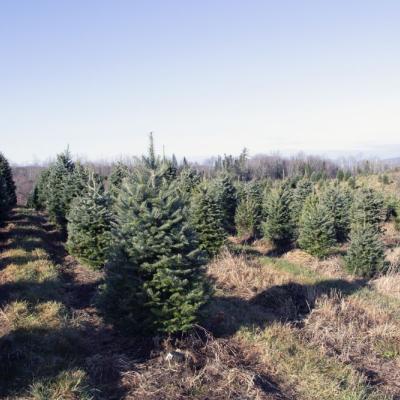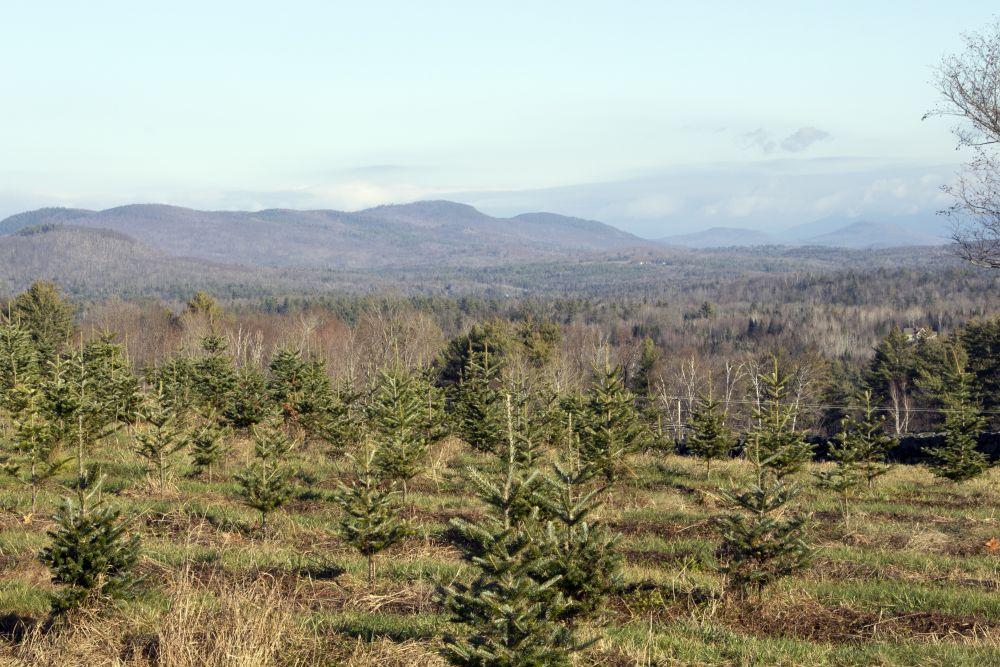Christmas trees as wildlife habitats
- Tags:
- Wildlife,
- The Rocks,
- Something Wild

Young sections of a Christmas tree farm most closely resemble a meadow. (Photo: Anna Berry)
"Something Wild" is joint production of NH Audubon, The Society for the Protection of New Hampshire Forests & NHPR.
We recommend listening to it in its original format but a transcript of the show is also below.
You can hear Something Wild on-air at NHPR every other Friday at 6:45 a.m. and 8:45 a.m., or subscribe to the Apple podcast here.
______________________
This time of year, you're likely to see cars and pickup trucks heading home on the highways with fresh-cut Christmas trees tied to roofs or in the truck beds. Fraser firs, Korean firs, Balsam firs, and Spruce (ouch!)...
So today on Something Wild we take a look at Christmas tree farms, and the important habitats they provide for New Hampshire wildlife.

You might be heartened to know that tree farms are a unique land use, and serve as early successional habitat, one that is neither residential neighborhood, cropland, nor deep forest. It's a landscape that was far more common a century ago, before small family farms began to vanish.
Early successional habitats are an incubator: warm, sunny, scrubby zones with a variety of foods...like grasses, weeds and sometimes fruit-bearing shrubs or vines…raspberries, blackberries and grapes.
Anything sun-loving, including fast-growing tree seedling and saplings.
Tree farms provide ample food and shelter to a wide variety of disturbance-adapted insects, birds and mammals, all native to the Granite State.
Bigger farms will usually plant in rotational stages with the youngest areas dedicated to transplanted nursery seedlings two to three years old, barely knee high. And it can take anywhere from nine to twelve years for these trees to be ready for harvest.
Young sections of a Christmas tree farm most closely resemble a meadow, which during warmer months is home to an assortment of insects: dragonflies, butterflies, and crickets. Which in turn attract mammals: mice, moles, skunks...even porcupines and woodchucks that ALSO like to feed on the clover mixed into the tall grass.
In early June, deer give birth to fawns and tuck them beneath the shelter of conifers. They seem to enjoy the relatively thick cover of young fir trees, but also having the ability to see approaching predators down grassy open lanes. Row upon row of beautiful young trees!
By mid-late summer, it’s common for Christmas tree growers to mow the grassy aisles between rows, giving opportunists like foxes, coyotes and other mammals a chance to prey on rodents that are suddenly exposed without cover. Mowing between trees also reveals ground hornet nests, a delectable treat only a bear could love.

This type of habitat is also perfect for open country birds of prey, including the American kestrel, a small falcon that nests in old woodpecker holes or rotting barn eaves. They’ll perch like a Christmas star atop fir trees while hunting voles and grasshoppers.
And lest we forget nesting songbirds: song sparrows, cedar waxwings, robins and mourning doves all prefer to build nests close to the ground, making these farms ideal.
And because they are perpetually kept in the early successional stage - where you've got sun, you've got grass, you've got insects - they're the gift that keeps on giving.

